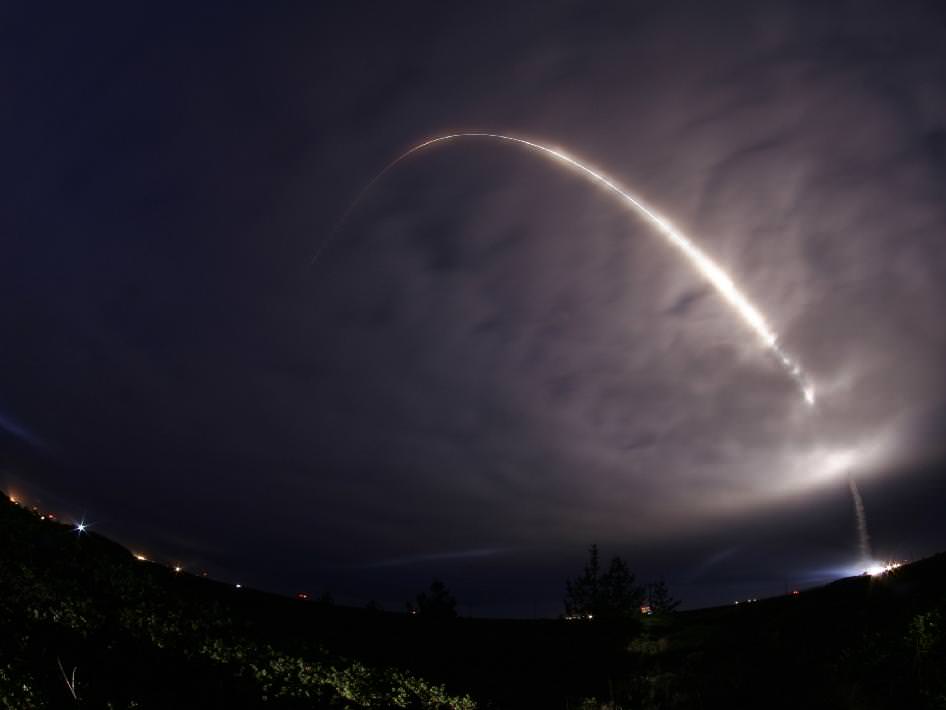NASA’s Wide-field Infrared Survey Explorer, or WISE, successfully lifted off this morning on its way to map the entire sky in infrared light. A Delta II rocket carrying the spacecraft launched at 6:09 a.m. PST (9:09 a.m. EST) from Vandenberg Air Force Base in California. WISE quickly began transmitting data – just 10 seconds after spacecraft separation — and all through the events that lead to bringing the satellite into a polar orbit 326 miles above Earth.
[/caption]
“WISE thundered overhead, lighting up the pre-dawn skies,” said William Irace, the mission’s project manager at NASA’s Jet Propulsion Laboratory in Pasadena, Calif. “All systems are looking good, and we are on our way to seeing the entire infrared sky better than ever before.”
Because the instrument sees the infrared, or heat, signatures of objects, it must be kept at chilly temperatures. Its coldest detectors are less than minus 447 degrees Fahrenheit.
“WISE needs to be colder than the objects it’s observing,” said Ned Wright of UCLA, the mission’s principal investigator. “Now we’re ready to see the infrared glow from hundreds of thousands of asteroids, and hundreds of millions of stars and galaxies.”
With the spacecraft stable, cold and communicating with mission controllers at JPL, a month-long checkout and calibration is underway.
WISE will see the infrared colors of the whole sky with sensitivity and resolution far better than the last infrared sky survey, performed 26 years ago. The space telescope will spend nine months scanning the sky once, then one-half the sky a second time. The primary mission will end when WISE’s frozen hydrogen runs out, about 10 months after launch.
WISE will catalog a variety of astronomical targets. Near-Earth asteroids, stars, planet-forming disks and distant galaxies all will be easy for the mission to see. Hundreds of millions of objects will populate the WISE atlas, providing astronomers and other space missions, such as NASA’s planned James Webb Space Telescope, with a long-lasting infrared roadmap.
Source: NASA


Sorry about this but:
I suppose this spacecraft is run by a bunch of wiseguys?
I think you should wise up to the comment policy! No wisecracks allowed! 😀
😛
Really nice to see this mission finally up and running. A pity, though, that it will only work less than a year. I wonder if they have any plans for a “warm mission” like spitzer is doing now?
Why did they hold on to the solid boosters for so long after they burned out? Seems like an awful waste of fuel to keep accelerating them.
They do not hold on Sili, they eject them.
But they keep on flying next to the rocket for a few seconds because it already has the same speed.
That was a fantastic launch – textbook!
@Sili It’s not rocket propellant they’re using to cool WISE it’s liquid nitrogen (I would think) in a seperate tank – that’s what will run out in 10 months.
They held on to the boosters for about 30 seconds after they ran out of fuel to make sure that the booster would impact the water rather than risk hitting ground.
Vedic: Liquid Nitrogen isn’t quite cold enough. They are using FROZEN hydrogen. They expect the supply to last about 10 months.
An orbital launch is definitely an interesting sequence of events. There’s nothing quite like seeing a well designed machine perform EXACTLY as planned!
Try this one on for size: The White Knight II carries the X-38B to 50,000 feet. The X-38B is released and fires its rocket engine. At the top of its ballistic trajectory the doors on the back open and release a mini satellite. The mini satellite’s engine then fires and places that payload in LEO while the X-38B glides back down to the spaceport’s runway..
Interesting, they really did hold on the boosters while the main engine was burning. It is indeed a waste of fuel, but maybe the payload was light enough so they have this reserve.
Is this standard procedure for this rocket?